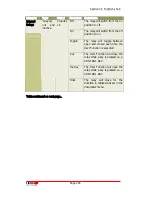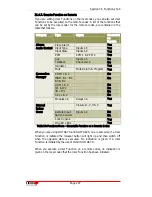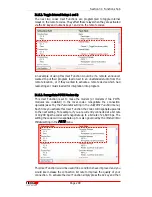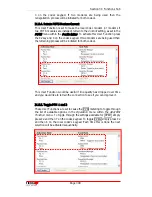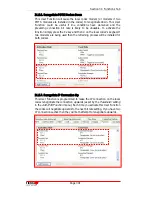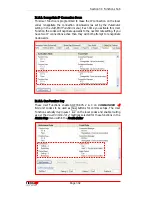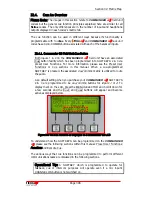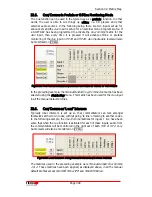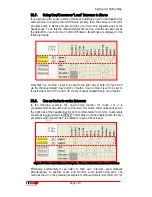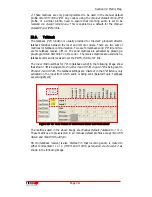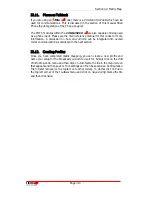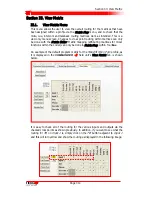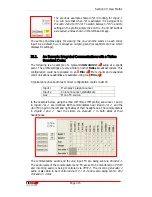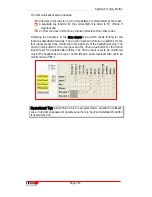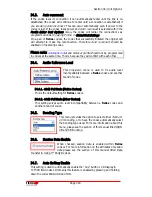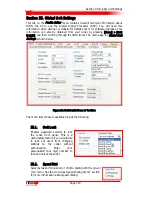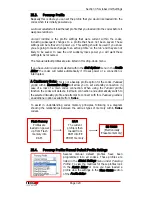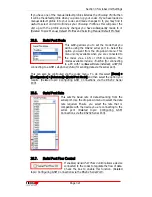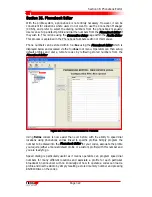
Section 32: Matrix Map
T
ieline
Page 307
T E C H N O L O G Y
32.3.
‘Mapping’ Matrices for Codec Functions
Operational Tip:
It is important to remember that local and remote matrices
need to be matched if features such as talkback are to be used. For example, if
the local codec is in the Broadcast Center, the matrix settings on the codec will
reflect the fact that it is receiving the program audio from the remote or field
codec, whereas the remote codec will be set to send program audio. Check that
the talkback matrices of both the local and remote codecs are configured
correctly. (Related topics: Manual Default Profiles and The Default Matrices)
To assign a particular matrix to a particular routing function, click with a mouse
on the routing function listed under the heading
Mode
on the
Matrix Map
main
menu page. This selects the function to be set. Then move your mouse cursor to
the right hand end of the
Matrix
column and click once to display a drop-down
menu listing the matrices to choose from. Move your cursor to the particular
matrix you want and then click on it to select it. The drop-down menu listing the
default matrices in the
i
-Mix
G
3
, is shown in the following image.
Figure 83: The drop-down menu for selecting matrices.
Alternatively, you can perform the same function without a mouse by using the
arrow keys to scroll down and select the routing function under
Mode
, then press
Enter on your keyboard. Then use the arrow keys to scroll to the matrix you want
and press Enter to select it.
The
Program
routing matrix defines which inputs can be routed to which
outputs.
Tool
Box
software can be used to define the cross points selected in the
matrix if you have purchased this option from
T
ieline
. The logistics of this is
discussed further in the
Matrix Editor
section of this manual.
The C
ue/Comms
matrices are used to define how the
Cue/Comms
functions will
work in
i
-Mix
G
3
codecs.
Click
here to
display
the drop-
down
menu


